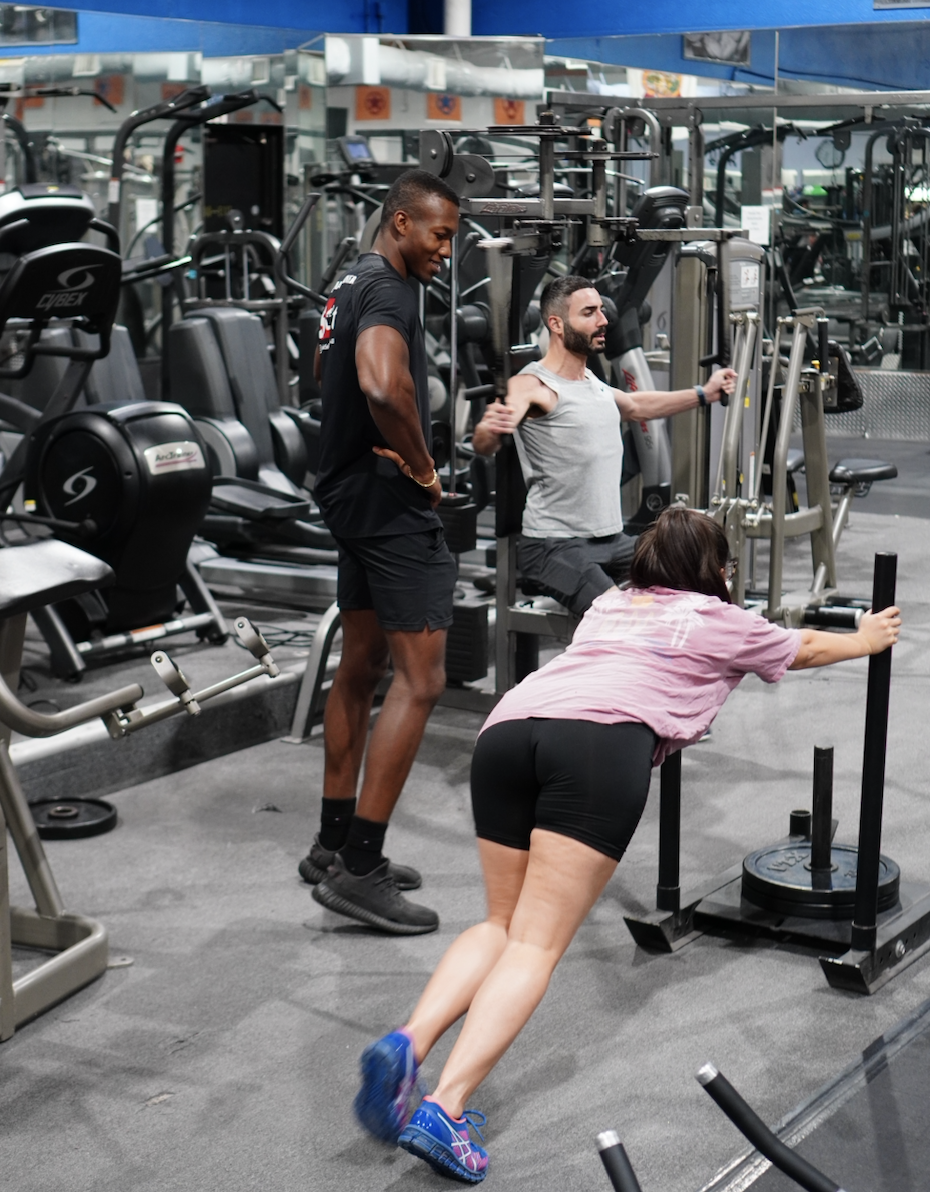You’re rushing to your morning meetings, juggling deadlines, and before you know it the day is over. There’s barely time to catch your breath, let alone squeeze in a workout.
Sound familiar? Like you, most professionals struggle to fit fitness into their hectic schedule or routine. But here’s the truth: balancing fitness and work isn’t about finding more hours in the day—it’s about maximizing the time you have.
As a personal trainer in Orlando with over 5 years of experience working with busy professionals, I’ve seen firsthand the power of small, strategic changes. You can transform your daily routine from impossible and stressful to effortless and structured.
Today, I’m sharing some powerful fitness hacks to get fit and stay fit, even when work feels overwhelming.

SoFit personal training session
Start Small, Build Big
Have you ever noticed how some of the most successful professionals didn’t start with huge commitments? They started small, with manageable goals. Fitness works the same way. You don’t need to carve out hours for the gym. Instead, focus on micro-workouts, stretching, and bodyweight exercises that can fit into your breaks.
One of my clients, Adriana, a busy corporate lawyer, who felt like she had no control was stuck in an endless loop of casework, project planning, and stress. She had completely written off the idea of having a solid workout routine or structured eating habits. Together, we started with just 1-2 45-minute personal training sessions she could squeeze in throughout the week during her slower days. Fast forward three months, and she was more consistent, more energetic, and most importantly, fitter. All this, without drastic changes to her schedule.
For busy professionals, consistency is the secret weapon. A simple commitment to just one workout a week and one 30-minute walk after add up to significant results over time. Adriana’s story is proof—small changes lead to big wins.

Personal Training Orlando
Maximize Time Efficiency with HIIT Workouts
When time is tight, high-intensity interval training (HIIT) is your best friend. In just 15-20 minutes, you can get a full workout that combines strength and cardio, giving you maximum results in minimum time.
One of my long-time clients, Vance, a healthcare executive with long hours and high-stress meetings, thought he didn’t have time to exercise. I introduced him to HIIT workouts on his off days to maximize his time. Thanks to short bursts of intense activity that fit into his early mornings, Vance felt motivated enough to commit to adding multiple training days. Doing this, he was able to maximize his results.
Vance managed to fit in these HIIT workouts before his day started. By dedicating just 25-30 minutes throughout his week, he was able to transform his energy levels and fitness results.
Prioritize Recovery for Long-Term Success
Personal Training isn’t just about working work—it’s also about how well you recover and fuel your body. When your schedule is packed, you might push yourself hard without taking time to rest and recover. But here’s the truth: recovery is essential for progress, and it doesn’t require more time, just some more intention.
If you don’t allow your body time to recover, you’re more prone to injury and burnout. Incorporating active recovery into your routine will help sustain energy and prevent fatigue.
The Role of Mental Recovery in Fitness
While we often focus on physical recovery, mental recovery is just as important. Training hard every day or working a grueling 40-plus hour week is not only stressful for your body, but also your mind. Taking time to mentally reset can prevent burnout and keep you motivated in the long run.
You can incorporate mental recovery by taking a break from structured workouts once a week and doing something fun or relaxing. Whether spending time with friends, reading a book, or practicing mindfulness, engaging in activities that help you de-stress can rejuvenate both your body and mind.
Turn Your Commute into a Fitness Opportunity
The commute—a somewhat dreaded part of the day for many professionals. But what if you could turn that into a chance to stay active?
I once worked with a client who walked 20 minutes to the train every morning. When we analyzed her daily routine, we realized that she could use that commute to improve her fitness. By simply adding a brisk pace and light resistance bands for a few stretches during the walk, she turned her commute into a workout.
turn your commute into an active opportunity, with examples like taking the stairs, parking further away, or walking to meetings. If you drive, park farther away from your office, or take the stairs instead of the elevator. These little actions can transform how active you are throughout the day.
Balancing work and fitness doesn’t have to be an all-or-nothing situation. As we’ve seen through stories like Adriana’s, small, consistent actions build up over time and lead to real, lasting results. Whether you’re fitting one workout throughout the week, or turning your commute into a mini-exercise routine, or leveraging the power of steady-state walking, there’s always a way to stay active.
Author: Sheneider Orelus



